Helen Hunt, 60, Stuns During Her Latest Appearance, and Her Lips Become the Center of Attention

People are shouting and waving their hands in the auction room. The presenter can’t calm everyone down because the lot on the table is the most expensive dirt in the world. Its price is about $9 billion. But it’s really hard to imagine its real value. Because it’s dirt from Mars.
It’s so expensive because it’s going to take one decade, billions of dollars, and three space missions to deliver the dirt here, to Earth. And we’ve already started the first mission. On July 30, 2020, a single-use Atlas V rocket was launched from Earth’s surface toward Mars. The cost of launching such a rocket is about $109 million. The rocket carried the Perseverance rover and Ingenuity drone. The flight took about seven months.
On February 18, 2021, the rocket finally reached its destination. The landing module carrying the rover and drone was launched into the atmosphere of Mars. The robotic heroes traveled inside a capsule faster than the speed of sound. Underneath, the capsule was protected by a heat shield to keep its valuable cargo from burning due to high temperatures.
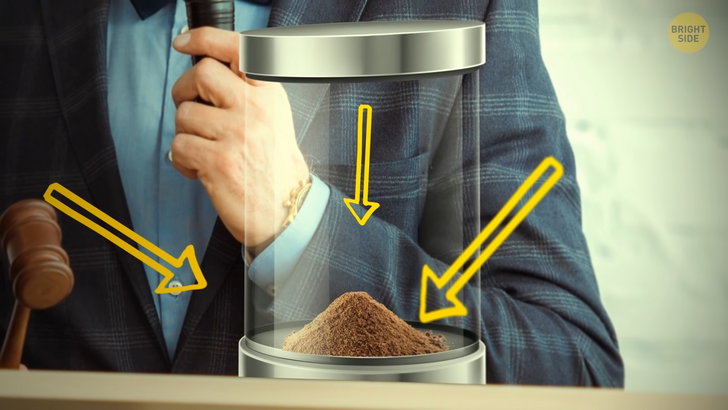
It was time for the team at NASA’s Mission Control Center to clench their fists and hope that the landing would go smoothly. The entire process was automatic. Once the cargo capsule entered the atmosphere of Mars, a parachute successfully opened. This reduced the speed of the capsule to 1,400 feet per second [(420 m/sec)]. As soon as its drop speed went down to subsonic, the heat shield was dropped. At this point, people saw the surface of Mars [real footage] for the first time with the help of the camera and radar placed inside the capsule. The capsule was already moving at speed comparable to that of a supercar on a racetrack.
The drop speed went down to 475 feet per second [(145 m/sec)] [*real footage] at an altitude of 6 miles [(9.5 km)] above the surface. That’s how high planes on Earth fly. At an altitude of about 2 miles [(3.5 km)], the eight jet engines of the landing module started. The navigation system adjusted the landing trajectory. The landing module then separated from the parachute capsule and began its independent descent at a speed of 245 feet per second [(75 m/sec)].
Everyone at NASA’s Mission Control Center was waiting for a successful landing. 1,000 feet above the surface. The rate of the descent is 100 feet per second. At about 65 feet above the surface, the sky crane system began lowering the rover to the surface. The Perseverance released its six wheels like an airplane releases its landing gear. The wheels of the rover were getting closer and closer to the surface! A few more feet and... Touchdown! At the same moment, the Perseverance cut the cables of the sky crane. The entire team on Earth erupted in joy!
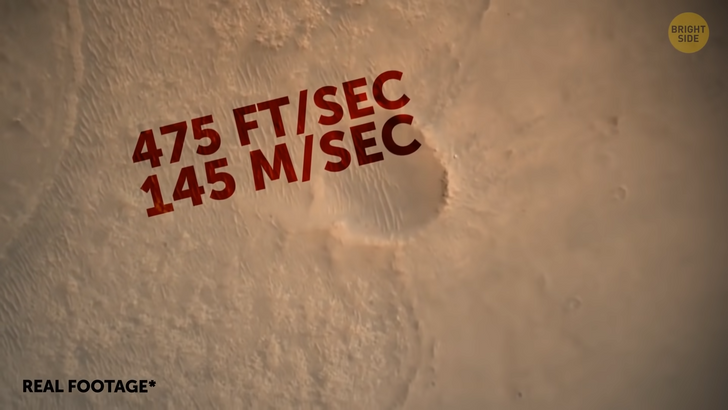
In the next second, the rover also cut the cables connecting it to the landing module. It flew off and made its own uncontrolled landing. In other words, it crashed into the surface of the Red Planet. The second step of the mission that’s supposed to deliver the most expensive dirt in history to Earth began with collecting samples.
This phase actually started long ago on Earth. The rover carries 43 titanium tubes. Each of them can hold a soil sample the size of a human pinkie. While preparing these tubes in a laboratory on Earth, scientists first blew some air through the tubes. Then they bathed them in tubs filled with acetone and other chemicals to make sure no bacteria remained inside. Then they were placed in an oven heated up to 300˚ F for 29 hours.
When Perseverance collects samples in these tubes, they can be stored there for at least 10 years. By comparison, lunar soil samples put in sealed boxes could only be stored for 10 days. Perseverance also has a lot of equipment and spectrometers to research samples. It even has a powerful laser. The rover can melt solid rocks into plasma and then analyze their composition. Scientists hope to find traces of living organisms in these soil samples. That’s exactly why Perseverance landed in Jezero Crater.
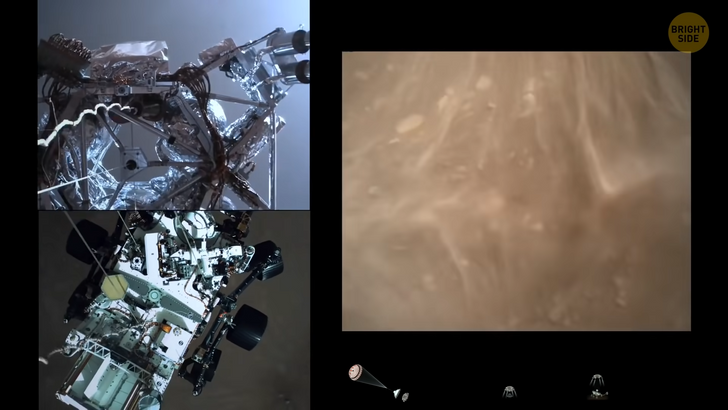
This crater is as wide as the Great Salt Lake and was once filled with water. You can see dry riverbeds and clay deposits there. This makes scientists believe that once, there was water in that region. And since water is the basis of all life, researchers hope to find traces of its existence here.
Another goal of Perseverance is to test the technology that will make it possible to produce oxygen on Mars. People would need it for breathing and as rocket fuel. To do this, the rover uses MOXIE — which stands for the Mars Oxygen In-Situ Resource Utilization Experiment.
This is a box the size of a hamster cage that weighs as much as a large dog. Its purpose is to pressurize Martian air so that it resembles that on Earth and then heat it up. A chemical reaction with a special metal inside the box is supposed to break one atom of oxygen from carbon dioxide. As a result, we’ll have carbon monoxide and pure oxygen.
If this technology proves successful, it’ll be scaled 200 times. This way, we’ll produce enough oxygen for astronauts to breathe and for rockets to be launched back to Earth. So, the $2.7-billion rover (this price includes its design cost, construction, and maintenance) will be collecting dirt and rock samples until 2023. It’ll leave closed tubes with samples right on the surface of Mars. And almost a decade later, they’ll be collected. People will need another rover to do that.
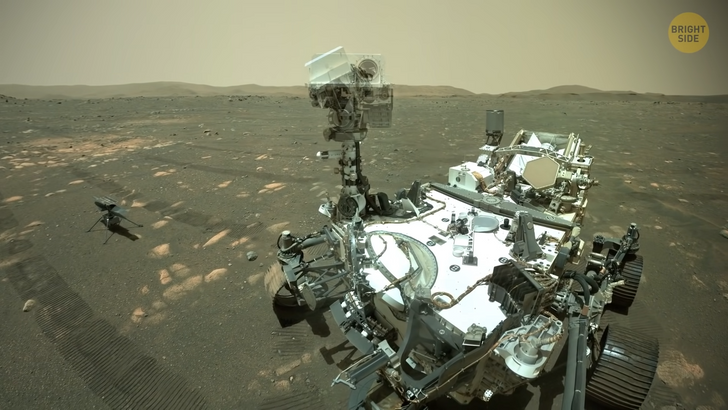
A new mission will take several billion dollars to build. Then it’ll need 7 months to reach Mars. After that, there will be another complicated landing. It’ll be a simple rover with big wheels. They’ll help it get around Martian hills.
Large solar panels will power it with electricity. This rover will gather all the samples collected by Perseverance. Then it’ll load them into a case the size of a basketball and carry it toward the rocket that will land on Mars together with it.
The next step will be to deliver the findings to Earth. The rocket with the soil and rock samples will have to take off from Mars and get into its orbit. Another spacecraft will be waiting for it there. The rocket will launch the sample case, and the spacecraft will catch it. This spacecraft will then start its engines and head back to Earth.
Upon arrival, the spacecraft will drop an entry vehicle. It’s basically a capsule protected by heat shields with the sample case inside. When the capsule enters Earth’s atmosphere, it’ll get very hot because of friction with the air. But the shields will protect the samples, and the capsule will land somewhere in Utah. The whole mission to deliver the samples will last about 5 years.
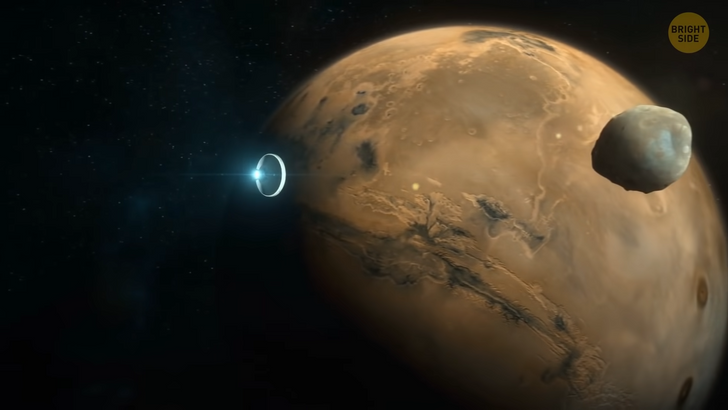
Only after that, the samples will be ready for research. And people will finally find out if there has been life on Mars. Was it before the birth of Earth, around 4 billion years ago? Or was it before humans became an intelligent species? Scientists hope to find the answers to these questions. That’s why these samples are actually worth a lot more than $9 billion.
What if Mars indeed turned out to be a potentially habitable place, and people would want to build a colony there? Then it’d be a few more decades of work before we could get to the Red Planet. To do this, people would have to use many dozens of rockets.
First, an empty spacecraft would be sent into orbit with the help of a launch rocket. Then another rocket would deliver cargo to this spacecraft. And people would need one more rocket to refuel the spacecraft. Only then, a seven-month trip to Mars would begin.
The spacecraft would have to deliver enough research equipment, building materials, and other supplies to Mars. Then we’d need to organize energy production. We could use nuclear power plants or solar panels for this. Houses for people would most likely be located underground. Mars’ atmosphere doesn’t have much protection from solar radiation. So people would have to hide from the Sun.

The next tasks would be fuel and oxygen production. MOXIE could help us with this. And, of course, food farming. People would grow food in airtight greenhouses right on Martian soil. But we’d still have to wear spacesuits there.
To feel at home, people would have to terraform Mars. We’d have to heat the planet and create an atmosphere similar to that on Earth. The pressure on Mars right now only allows water to be in a frozen state. We’d have to make it liquid.
Scientists offer many ways to do this. One of them is making a huge meteorite crash into Mars. But whatever method it is, it’d still take many dozens or even hundreds of years before we could call Mars our new home.











